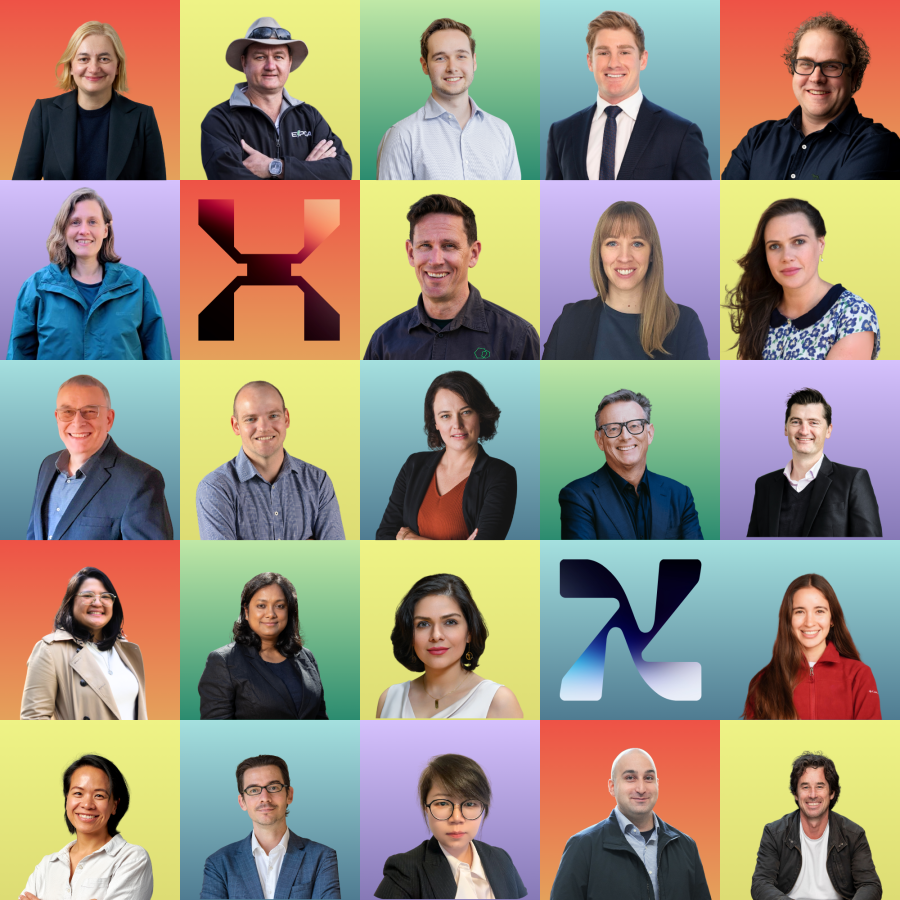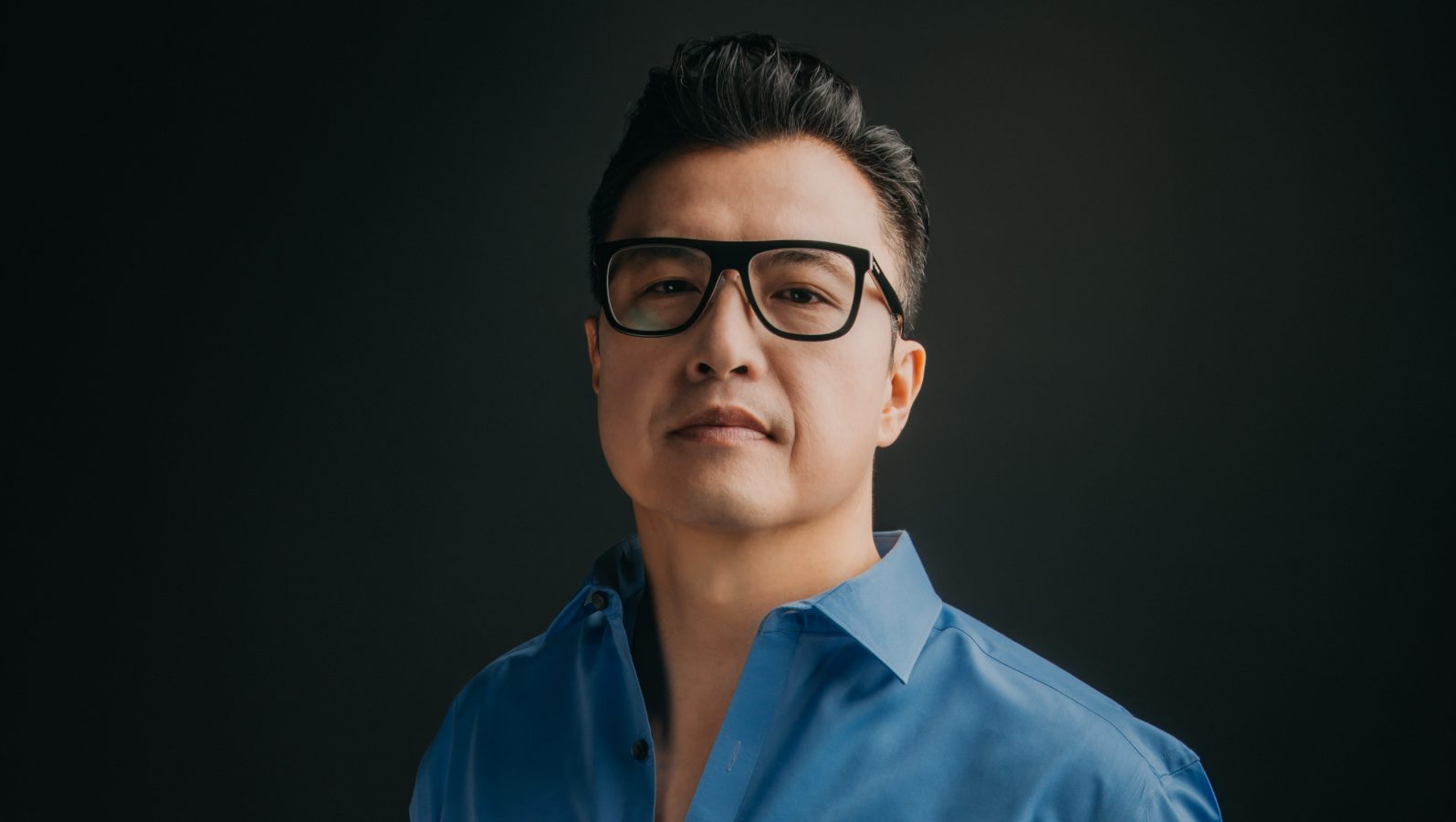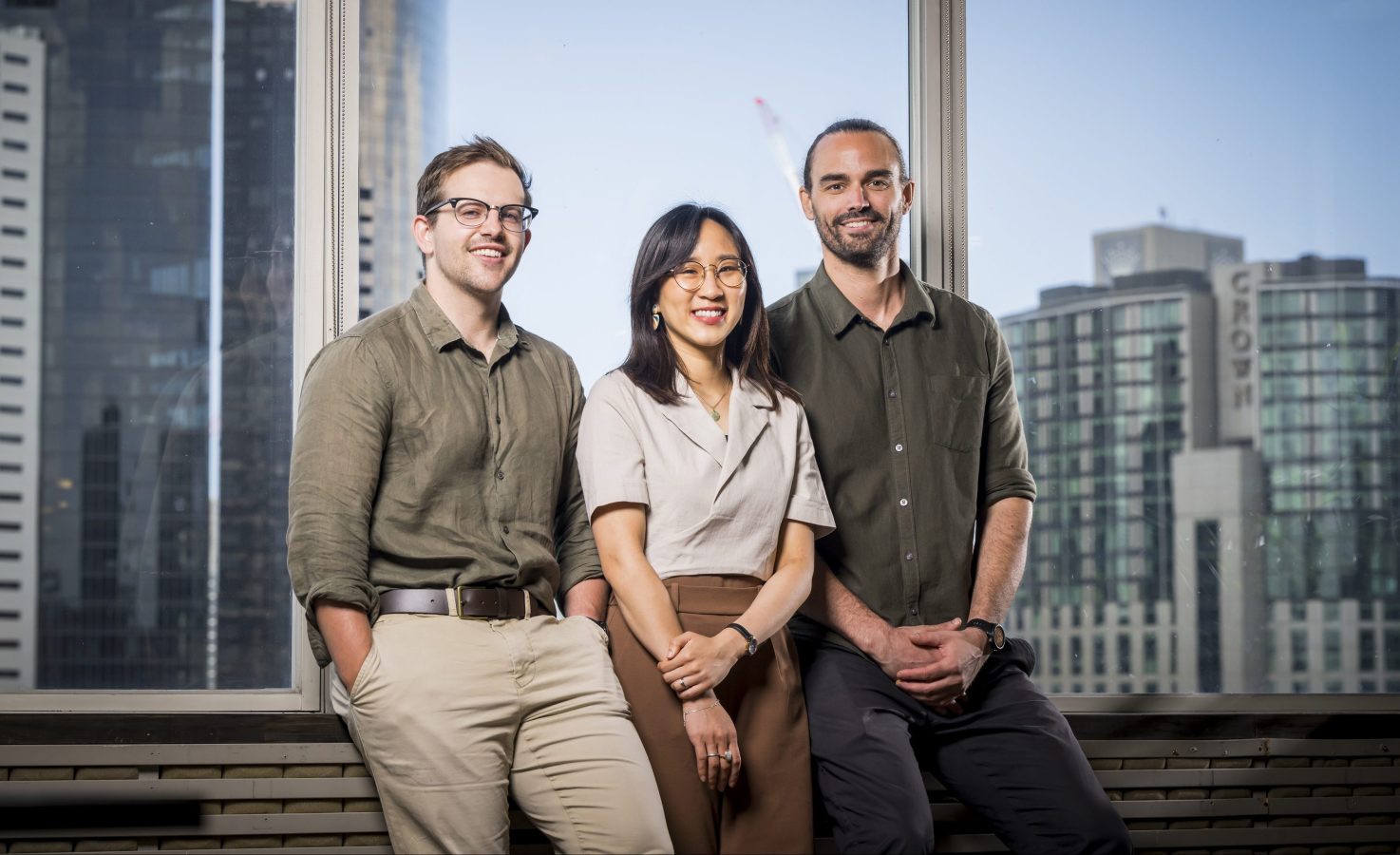The craft brewer leverages tech that allows its inner-city brewery to produce as much oxygen as 2 hectares of bushland – while reducing emissions from your burger.
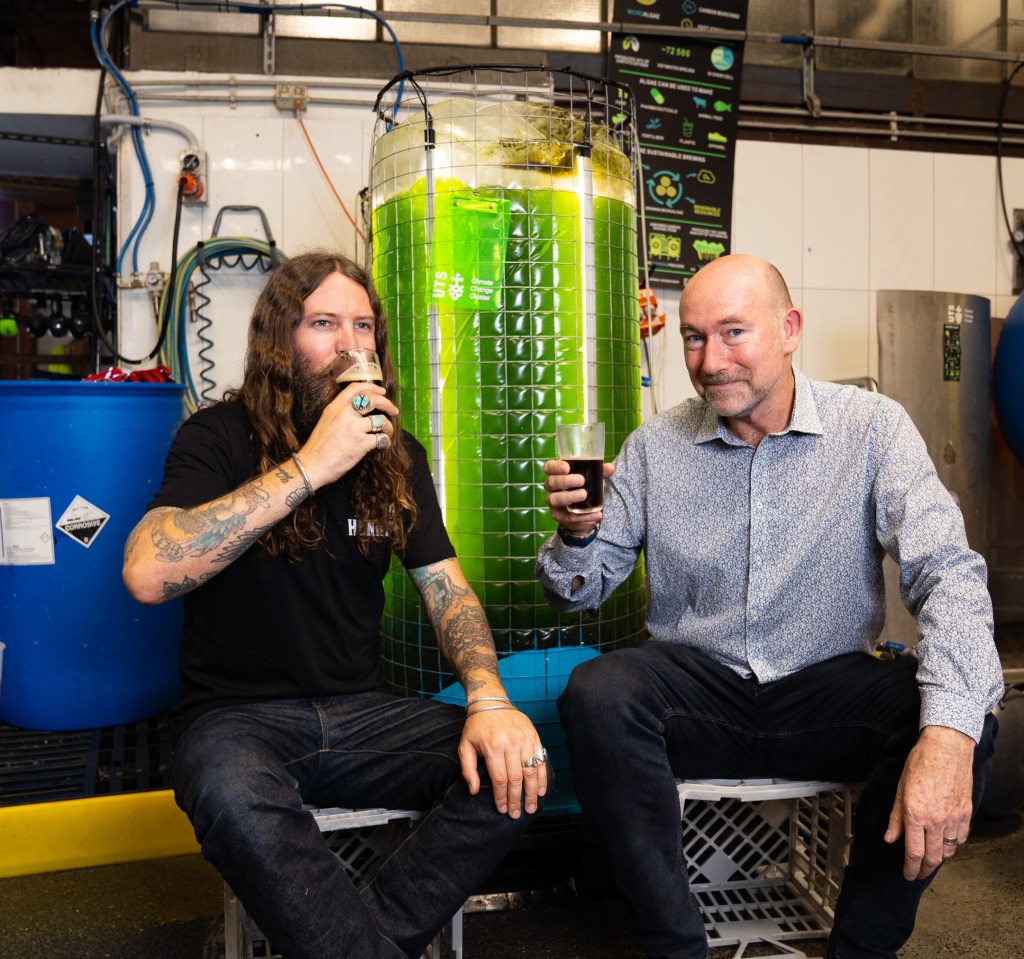
Young Henrys made its name brewing tinnies for tattooed inner-city drinkers. Now, the cult beer company is spinning out a biotech startup to save the planet with cleaner beer and beef.
What’s not to love then about the beer-fed bioreactor bubbling bright green under LED lights at the brewery in Sydney’s inner-west Newtown.
The bioreactor uses carbon dioxide captured from beer fermentation and turns it into oxygen, and a methane-reducing livestock feed that could reshape two significant emissions sources: brewing and ruminant livestock.
The exact way that the partnership between the brewer and the University of Technology Sydney came about seems to have been forgotten over the last seven years. But both Young Henrys co-founder Richard Adamson and the UTS Climate Change Cluster director, Professor Peter Ralph, remember touring each other’s facilities and seeing the potential.
“Algae is very similar to brewers yeast,” Adamson explains to Forbes Australia. “But it does the opposite thing to yeast. It’s taking in CO2 and light and turning them into sugar and oxygen, whereas yeast takes in sugar and oxygen and makes alcohol and CO2.”
“And Peter asked if we were interested in getting involved with research – and I was like, ‘Yeah, maybe. Let me have a think about how we could use it.’”
They knew the algae would probably eat up the carbon dioxide produced by brewing. The next question was what to do with it. When algae dies, it can be used in a huge array of innovative products, Ralph explained to the brewer.
“I suggested to them we could make plastics, make pigments, make antioxidants, make human food,” says Professor Ralph. “There’s 50 products that we could have made from it.”
But Adamson went away and thought about it.
Spent grain from their brewing process was already being taken away and fed to cattle. “I’d read about red asparagopsis – the seaweed that was reducing methane in cattle,” Adamson tells Forbes Australia. “I went back and asked the question, ‘Well, can microalgae do the same thing?’ and Peter said, ‘Yeah. I’m pretty sure that they could.’”
For plant physiologist Ralph, the eureka moment is always the point at which he gets an industry partner to come on board. And some industries are better than others. “Brewers are the best because they already keep a microorganism alive, they understand gases, they understand fluid dynamics, they understand electronics. Whereas, if you’re talking to a power plant or a paint manufacturer, ‘How do I keep this stuff alive?’ ‘How do I move the water around?’”
Paying for the research out of its marketing budget, Young Henrys got a matching government grant under Australia’s Economic Accelerator Ignite program.
“Think about algae as being like software. We have the patent … you probably need to work with different equipment manufacturers to create different outcomes.”
Young Henrys cofounder Oscar McMahon
Ralph put a PhD student onto the two questions: could algae survive in the cocktail of gases produced by brewers; and, could they find a species that mimicked the methane-reducing effects of seaweed?
“This type of assessment is our bread and butter, working out which species does the best for a particular partner,” says Ralph. “We’ve been able to identify microalgae that benefit in reducing methane and help the cattle and help with the flavour of the meat, and all the rest of it.”
The final, more difficult, step was proving that it worked in the real world, says Young Henrys cofounder Oscar McMahon. “We’ve just done a feedlot trial where we have fed 80 lambs for 100 days on a diet of hay and little pellets made of microalgae,” says McMahon.
The algae pellets were less than 1% of the lambs’ diet, but just that tiny portion significantly reduced their methane emissions. And it improved their growth.
“The idea is that instead of creating methane, that energy can go into other things,” McMahon says. “So there are health benefits to the animal, there’s potentially health benefits to the end eater.”
The elegance of this process is that brewers already sell their spent grain to the livestock feed market. The supply chain from brewery to farmyard has existed for centuries, so the algae pellets can be easily tacked on.
The exact numbers achieved in the trial remain under wraps, ahead of the patents and scientific publication, but Ralph says that they’ll ultimately be able to reduce methane by up to 60%.
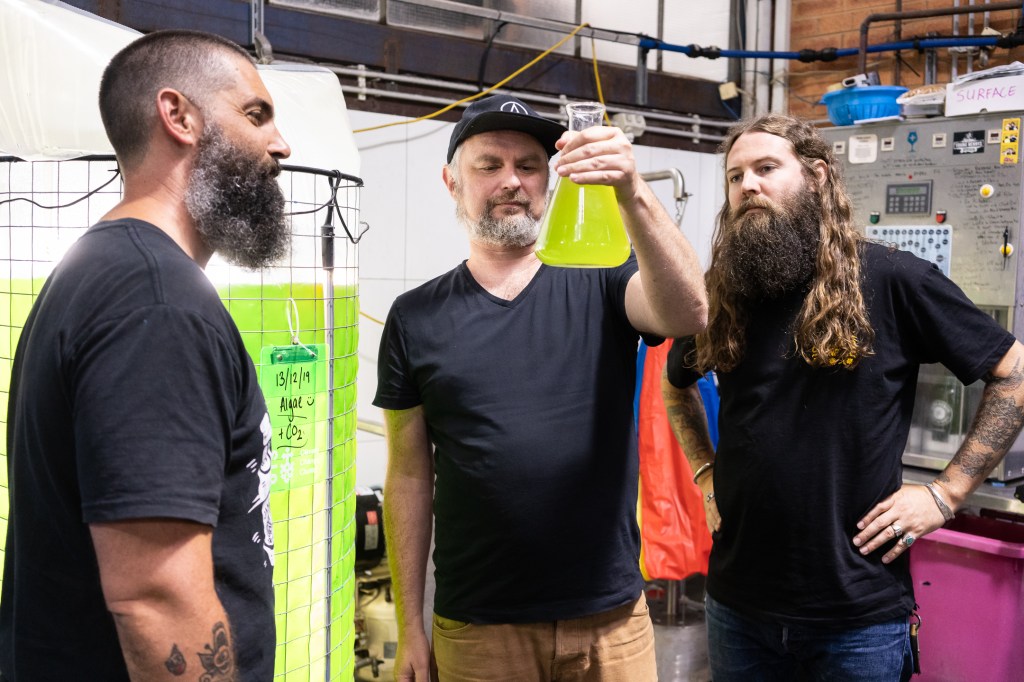
The intellectual property that Young Henrys now owns pertains to both how carbon dioxide is captured from the brewing process and the genetic strains of algae being used, says McMahon. They’re also in negotiations with another agricultural industry with a separate, undisclosed, use for the product that’s been developed by Ralph’s team.
They will all form the basis of an as yet unnamed biotech startup that Young Henrys is spinning out to captalise on the intellectual property.
“So you’ve got this existing ecosystem between brewers and agriculture … If you have a look at the United States, Japan, New Zealand, the UK, they’re all big beer producers and they all have sizable dairy or beef industries.
“And brewers are not only CO2 creators, but we’re CO2 users. We use CO2 to carbonate and bottle, can and keg beers.” Young Henrys used the CO2 it captured from its fermentation to use in its carbonation, only using the leftovers to feed the algae.
A blooming market
While the theoretical total addressable markets of beer and livestock are in the multi billions, McMahon recognises that the realistic market will comprise the small proportion of more progressive producers who are thinking about circular economics. But the technology is applicable more widely to all food producers generating carbon dioxide. And also to precision fermenters in non-food industries.
“Australia produces a lot of food, a lot of beer. If you can have those two things becoming more secure and more sustainable in tandem, we think that that is an amazing bi-industrial piece that we can be a part of. But we are trying to stay relatively agnostic about how it’s used.”
“If you think about how many millions of dollars get spent every year in marketing … trying to make someone feel good about a company or a product, it turns out you can just do good things and you’ll get that same response.”
Oscar McMahon
McMahon sees the startup as an intellectual property licensing business, not a producer. “Think about algae as being like software. We have the patent for the process, and depending on which market and which industry you want to go into, you probably need to work with different equipment manufacturers to create different outcomes.
“We want to use other people’s hardware that fits into existing production and feeding ecosystems. We’ve had some conversations with some great people who are at the forefront of creating really efficient bioreactors, which is Algenie, and we are hoping to get a commercial trial of one of their bioreactors into the brewery really soon with the aim of finding the most cost-effective and impactful way to rapidly grow microalgae in a food production business.
“That could be a brewery, a cidery, a winery, it could be a tofu manufacturer. Any CO2 emitting food-based business … Precision fermentation is a potential growth sector.
“Our brewery makes as much oxygen as two hectares of Australian bushland, in the middle of Newtown. Think about that. How simple that is. Why doesn’t every skyscraper have an algae tank on its roof?”
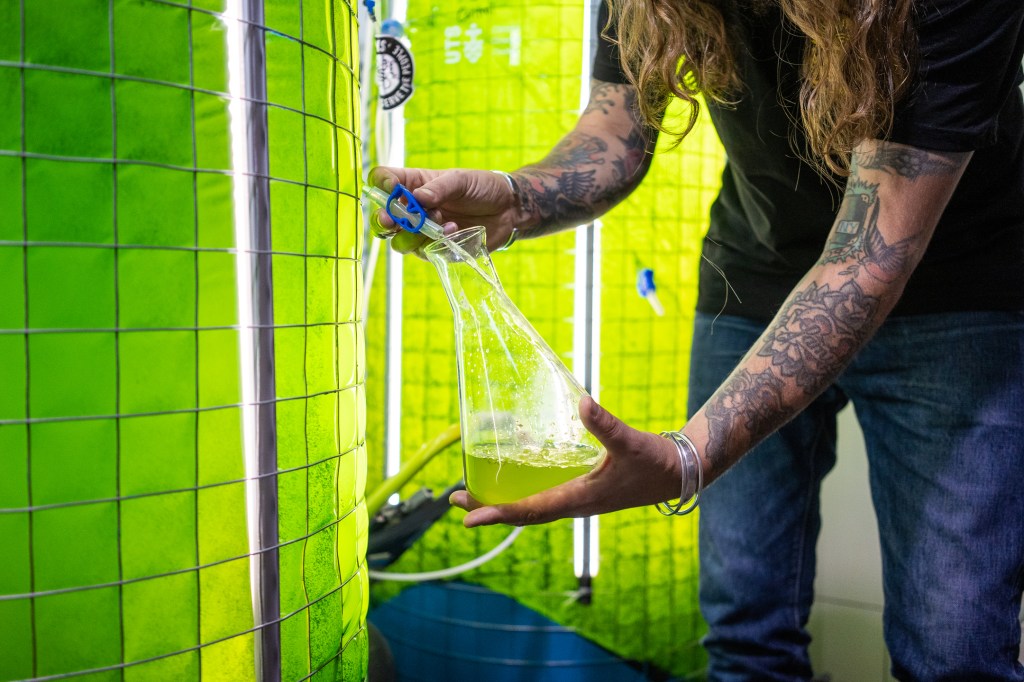
Young Henrys still owns 100% of the IP, but is in conversation with family offices and impact investors to raise capital for the start-up which will become a separate corporate entity.
“It’s still a seed-funding round, because there’s still some research to do,” says McMahon. “It’s a funny thing where a 13-year-old business has a seven-year-old startup in it.”
Young Henrys, with a staff of about 50, is one of Australia’s more successful craft brewers. It is projecting close to $50 million in revenue this financial year, having made about $45 million last year.
The algae business is three years away from revenue, McMahon says, but once they get there, it has the potential to scale fast. “If we pass the gateways that we’re putting up, we would be looking for a much larger capital injection to blow this up to a whole new level. And that’s when it would definitely surpass – well, it could potentially surpass – Young Henrys [in earnings].”
How it works
CO2 from the fermentation of beer is captured by equipment made by US-based Earthly Labs, which specialises in carbon capture for small businesses.
The CO2 is fed into bioreactors full of a Young Henrys-owned strain of algae.
The algae converts the CO2 to oxygen. A 600-litre bioreactor creates the same amount of oxygen as a hectare of bushland, they claim.
The remnant algae creates a livestock feed product, which, when fed to ruminants at just 1% of total food intake, reduces the methane emissions of those ruminants.
Social Payback
McMahon and Adamson met in a pub, the now-closed Roxbury Hotel in Glebe, Sydney. McMahon was behind the bar, Adamson was a founder of the soon-to-be-liquidated Barons Brewing. Both musicians, they talked about music mostly. Then beer.
Craft beer was not yet ubiquitous in 2009. So they started a craft beer appreciation society in the back room of the pub. The club grew quickly, and one night after a monthly meeting, Adamson mused on how cool it would be to create a beer brand that was as in touch with its drinkers as their club was.
The next day it still seemed like a good idea.
It took them a couple of years to raise the money and find a warehouse home in inner-Sydney Newtown, and it all came together, says McMahon. “We had this confluence of hospitality experience, beer experience, live music experience.” Young Henrys was born.
The craft beer boom was a long way from its peak. Their brew sold itself. “You could fuck up a couple of times a year and still grow,” says McMahon.
Adamson and McMahon tried to think about the environmental impact of their brew from the beginning. “There was always a friction point between what you can afford and what is the right thing to do,” says McMahon. “But any time there was a big decision, we would challenge ourselves to put a sustainable lens to it. By doing that, we started making better decisions.”
These included a more efficient brew system and a community-owned solar farm on the roof. They were first movers on a national keg rental scheme, so they didn’t have to bring their kegs back huge distances, halving keg miles. “We went into tinnies because you can fit 30% more beer onto a pallet of cans … and aluminium in Australia is so much more recyclable than glass. These are all the little decisions along the way.”
And every time they made such small decisions, they noticed they got outsized positive responses from staff and customers. “There was this obvious social payback. When you do something good, people like it … If you think about how many millions of dollars get spent every year in marketing … trying to make someone feel good about a company or a product, it turns out you can just do good things and you’ll get that same response.”
Look back on the week that was with hand-picked articles from Australia and around the world. Sign up to the Forbes Australia newsletter here or become a member here.

